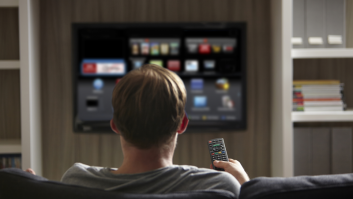
With most broadcasters now offering ever more advanced live streaming services, it is clear that such platforms are here to stay. For many, the move to online was initially driven by audience demand, and it was only later that the full potential of digital revenues was appreciated. Now that live streaming is commonplace, dynamic advertisement replacement is a topic that’s gaining a lot of traction.
The cost implications of live streaming in terms of encoding and CDN bandwidth are not insignificant, so it’s no surprise that initial efforts were more of a gesture to meet audience expectations than anything else. Some advertising options were available, but they were limited and littered with technical issues. Without an effective solution for in-stream ad insertion, most viewers would simply see the ads in the original feed a scenario the broadcaster wasn’t necessarily able to make money from.
Monetising the live stream is a major challenge, but one that is critical to the future of broadcasting. So it makes sense that many providers are turning their attention to dynamic advertisement replacement. By replacing the original broadcast ads, today’s budget-conscious providers are able to open up new inventory and implement the latest digital technologies. A major benefit is the ability to personalise new ads to each and every viewer, which vastly increases their value to the advertiser.
The biggest challenge in this use-case is to replace advertisements without disrupting the viewing experience. Transitions to and from replacement ads must be frame-accurate and seamless, without any of the tell-tale signs of earlier implementations such as spinning wheels and buffering. The ideal solution is to replace ads on the server-side, before the stream is delivered to the player. The result of this approach is that transitions are so smooth that viewers are largely unaware they are watching replacement ads.
By applying personalisation to the advertising, broadcasters are able to deliver far more compelling ads to each individual viewer who, in turn, is far more likely to watch through them. The value of each individual ad spot is vastly increased as a result.
But is it reliable? Such a solution will only work if it’s dependable and stable enough to cope with major TV audiences, potentially with millions of viewers tuning in at the same time. And it must be flexible, particularly in the case of live sporting events where the exact timings of ad breaks are determined on-the-fly by the specific action on the pitch. Needless to say, having a robust and reliable platform is essential.
The most forward-thinking providers are in a prime position to benefit from such a solution. Channel 4 recently announced personalised ad insertion for its new online offering, All 4, and selected Yospace to replace ads on all of its linear channels. The broadcaster has built up a database of more than 11 million viewers who have access to a bespoke set of content and related experiences, and now this level of personalisation is being applied to its advertising.
Live streaming is a critical element of the digital strategy of broadcasters and providers today, and, as such services grow ever more popular, it is becoming increasingly important to find a reliable, robust monetisation solution that caters for the individual without impeding the viewing experience. Dynamic and personalised ad replacement ticks all the boxes, and has turned live simulcast from a financial drain to an essential tool in digital revenue strategies.
By Paul Davies, Yospace







